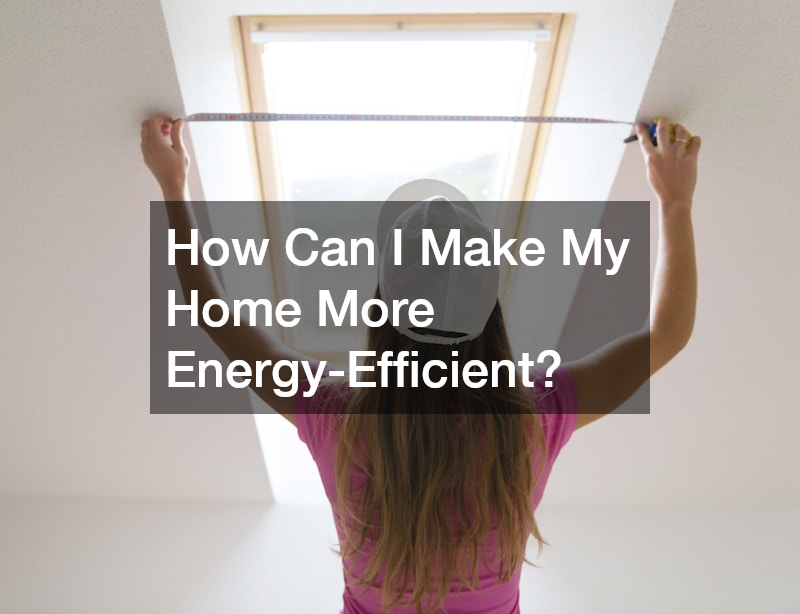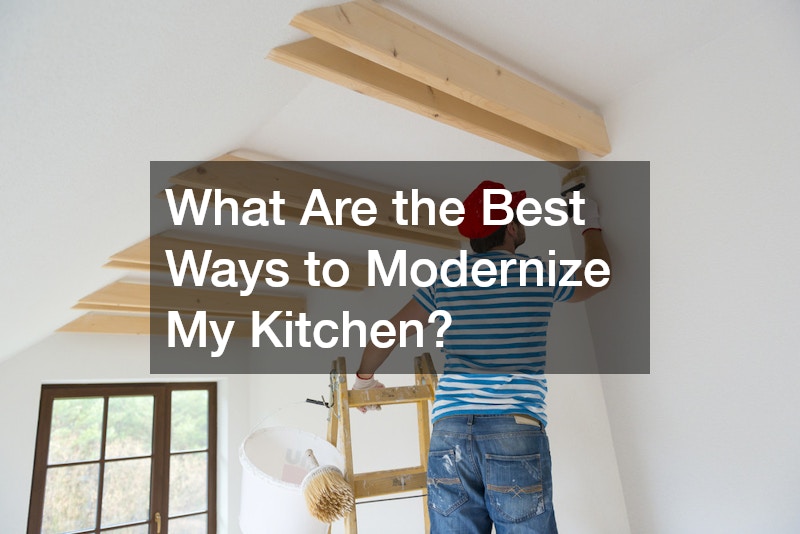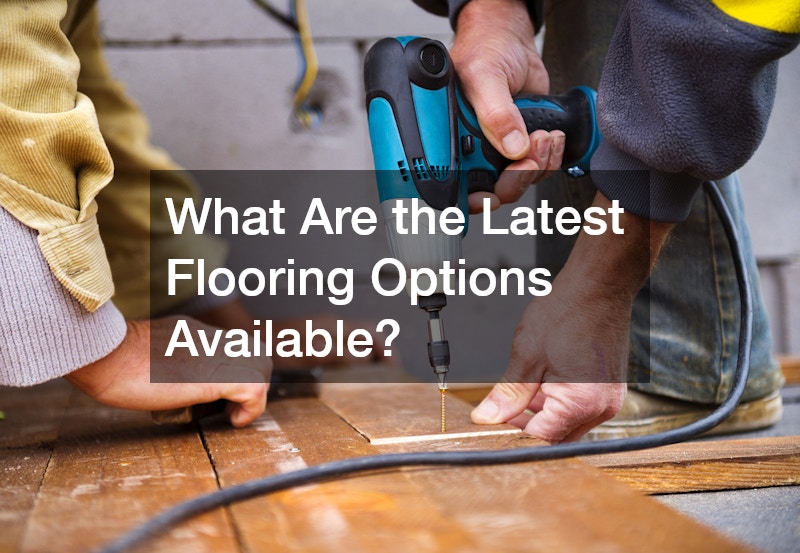One of the key themes for 2025 home updates is the integration of technology with eco-friendly living. Smart devices, energy-efficient systems, and sustainable materials are now the gold standard for anyone planning renovations. Beyond practicality, however, design remains central — creating a home that reflects your personal style while improving overall livability.
This guide explores practical ways to update your home in 2025, from maximizing energy efficiency to upgrading kitchens, bathrooms, and outdoor areas. It also highlights the importance of lighting, security, and sustainability — all critical aspects of the modern home. Whether you plan to do small improvements or major renovations, these insights will help you make thoughtful decisions that add value, comfort, and long-term satisfaction to your living space.
How Can I Make My Home More Energy-Efficient?

Energy efficiency remains one of the top priorities for homeowners in 2025, not only for environmental reasons but also for long-term cost savings. As energy prices fluctuate and sustainability becomes a global goal, homeowners are finding ways to reduce energy consumption without compromising comfort.
One of the best ways to enhance efficiency is through professional assessments that identify areas of energy loss, such as poorly insulated walls, old windows, or inefficient heating and cooling systems. Collaborating with excavating contractors can also help when making foundational changes to your property — for example, improving drainage systems, preparing for geothermal installations, or ensuring that your home’s base is properly insulated against moisture and temperature fluctuations.
Additional energy-saving strategies include upgrading to smart thermostats, switching to LED lighting, and installing solar panels. These upgrades not only decrease utility bills but also make your home more self-sufficient and environmentally friendly. Investing in Energy Star-rated appliances, sealing air leaks, and using high-performance insulation will further enhance your home’s efficiency.
By taking a comprehensive approach to energy management, you’ll reduce your carbon footprint and create a home that supports comfort year-round while contributing to a more sustainable future.
What Are the Latest Trends in Home Interior Design?
Home interior design in 2025 continues to blend functionality, warmth, and sophistication. Homeowners are gravitating toward interiors that feel natural yet modern — embracing earth tones, organic textures, and sustainable materials.
A major trend for this year is the resurgence of personalized spaces. Rather than adhering to a single design style, homeowners are mixing vintage pieces with modern décor to create unique, character-driven rooms. Another notable shift is the use of biophilic design — integrating nature into the home through greenery, natural lighting, and materials like stone and wood.
To bring these design visions to life, local painting contractors are helping homeowners experiment with color psychology, using soothing blues, warm neutrals, and deep greens to evoke calmness and connection. Accent walls are giving way to whole-room color experiences, where subtle variations in tone add depth and sophistication.
Sustainability also plays a central role in modern design trends. Recycled furnishings, low-VOC paints, and responsibly sourced materials are increasingly popular. Minimalist yet inviting interiors — complemented by functional furniture and layered lighting — define the home of 2025, offering both aesthetic beauty and everyday practicality.
How Can I Incorporate More Smart Home Devices?
Smart home technology continues to revolutionize how we interact with our living spaces. In 2025, automation isn’t just about convenience — it’s about improving energy efficiency, safety, and lifestyle quality.
From voice-controlled assistants to integrated security systems and smart lighting, the possibilities are endless. A local insulation contractor can be instrumental when upgrading your home to accommodate these technologies. Proper insulation and electrical routing ensure that devices function efficiently, preventing energy loss and optimizing performance for connected systems like smart thermostats or HVAC controls.
Popular smart upgrades include intelligent lighting systems that adjust automatically to natural daylight, smart blinds that enhance energy savings, and home hubs that integrate all devices into one cohesive ecosystem. Smart appliances — such as refrigerators that track inventory or washing machines that optimize water use — also continue to gain popularity.
Homeowners are increasingly focusing on data-driven living, where apps provide insights into energy usage, air quality, and overall efficiency. The key is to choose devices that enhance comfort while aligning with your sustainability goals, ensuring that every addition makes your home more functional and future-ready.
What Are the Best Ways to Modernize My Kitchen?

The kitchen remains the heart of the home, and in 2025, its modernization centers around efficiency, design, and personalization. Homeowners are blending classic craftsmanship with high-tech solutions to create kitchens that are both beautiful and functional.
When upgrading your kitchen, start by considering the layout and workflow. Open-concept designs that promote natural light and social interaction remain highly desirable. Additionally, replacing outdated materials with sustainable surfaces such as quartz, bamboo, or recycled stone adds longevity and environmental value.
Structural updates, like improving ventilation or addressing roof issues, can also have a major impact. In many cases, a reroofing project ensures proper insulation and protection, which helps maintain a consistent indoor temperature — a crucial aspect of an energy-efficient kitchen.
Smart appliances continue to dominate kitchen design trends. Touchless faucets, induction cooktops, and voice-activated ovens add convenience and hygiene benefits. Combining these innovations with timeless design choices — like neutral cabinetry and statement lighting — results in a kitchen that feels fresh yet enduring. By focusing on functionality, durability, and efficiency, your kitchen remodel can significantly boost both comfort and home value.
How Should I Update My Bathroom to Add Value?
Bathroom renovations continue to be one of the most effective ways to enhance a home’s value. In 2025, the focus is on spa-inspired spaces that promote relaxation and well-being.
Upgrading fixtures, improving lighting, and integrating natural materials can transform a standard bathroom into a sanctuary. Homeowners are increasingly drawn to features like rainfall showers, freestanding tubs, and underfloor heating systems. These upgrades not only enhance comfort but also contribute to the overall aesthetic and functionality of the home.
Incorporating high-quality tile flooring is a smart investment that adds visual appeal and durability. Modern tile options include large-format porcelain tiles, textured finishes, and eco-friendly materials designed for longevity and easy maintenance. Neutral color palettes, combined with organic textures and sleek hardware, help create a timeless and luxurious look.
Adding smart mirrors, motion-sensor faucets, and energy-efficient lighting can elevate both the form and function of the bathroom. The result is a space that feels indulgent yet practical — an essential combination for today’s homeowners seeking both relaxation and long-term value.
What Are the Latest Flooring Options Available?

Flooring has always played a pivotal role in interior design, setting the tone for a home’s overall style. In 2025, homeowners are embracing flooring that combines beauty, resilience, and sustainability.
The latest interior designs emphasize natural textures and low-maintenance materials. Engineered hardwood, luxury vinyl planks, and bamboo remain top choices for their durability and eco-friendliness. Advances in technology have also led to more realistic finishes, allowing homeowners to achieve the look of stone or wood at a fraction of the cost.
Hybrid flooring — combining waterproof properties with authentic textures — continues to rise in popularity, especially in high-traffic or moisture-prone areas. Patterned and geometric designs are making a comeback, adding depth and character to living spaces.
Sustainability remains a driving force behind material selection, with many homeowners opting for recycled or renewable products. Beyond aesthetics, the right flooring contributes to insulation, noise reduction, and overall comfort, making it one of the most influential upgrades in modern home renovation.
How Can I Enhance My Home’s Curb Appeal?
Curb appeal remains one of the most powerful factors influencing a home’s value and first impression. In 2025, homeowners are using innovative design techniques and sustainable landscaping to create inviting, eye-catching exteriors.
Start by evaluating your exterior paint, front entryway, and landscaping. Fresh paint in modern yet timeless colors can completely rejuvenate your home’s façade. Working with local electrical contractors can help incorporate exterior lighting that enhances architectural features and improves safety. Pathway lights, wall sconces, and energy-efficient LEDs highlight key areas while creating a warm and welcoming ambiance.
Landscaping trends for 2025 include drought-tolerant plants, native gardens, and eco-friendly irrigation systems. These not only improve curb appeal but also support sustainability by conserving water and reducing maintenance needs.
Adding modern touches like updated doors, new house numbers, or sleek outdoor furniture can also create a cohesive and polished exterior. Combined with proper lighting and landscaping, these updates ensure your home stands out in both style and substance.
What Advanced Home Security Systems Should I Consider?
In 2025, home security has evolved far beyond traditional alarm systems. Today’s advanced solutions integrate seamlessly with smart home ecosystems, providing homeowners with enhanced control, convenience, and peace of mind.
Modern systems include AI-powered cameras, motion sensors, and doorbell cameras that provide real-time updates and remote access through mobile apps. For those considering larger upgrades, partnering with a garage builder can ensure secure integration between your garage and home security systems. A professionally designed garage with reinforced doors and smart locks adds an extra layer of protection for vehicles and storage areas.
Smart security hubs allow homeowners to monitor and manage multiple aspects of their property — from lighting and locks to surveillance — all from a single platform. Biometric access systems, such as fingerprint or facial recognition locks, are also gaining popularity for their enhanced safety and convenience.
Ultimately, investing in a comprehensive home security system in 2025 not only protects your property but also enhances your overall quality of life by offering convenience and confidence in every aspect of home management.
What Should I Know About Sustainable Home Upgrades?
Sustainability continues to shape how homeowners plan renovations and upgrades. In 2025, eco-conscious design is not just a trend but a lifestyle choice that promotes both environmental responsibility and long-term savings.
Working with a plumber can be essential when implementing water-efficient solutions such as low-flow fixtures, greywater recycling systems, or tankless water heaters. These upgrades reduce consumption without sacrificing performance, aligning with the growing emphasis on conservation and sustainability.
Other eco-friendly improvements include solar panel installations, energy-efficient windows, and high-quality insulation. Choosing renewable materials, like bamboo, cork, or reclaimed wood, can also make a big difference in reducing your home’s environmental impact.
Additionally, sustainable living extends beyond materials — it involves creating energy-smart designs that optimize natural light, airflow, and overall efficiency. By embracing these principles, you not only reduce your carbon footprint but also create a healthier, more comfortable home environment that stands the test of time.
How Can I Incorporate More Natural Light?

Natural light is one of the most desirable features in any home, contributing to both aesthetic appeal and emotional well-being. In 2025, homeowners are finding innovative ways to increase daylight exposure while improving energy efficiency.
Working with local electricians can help you design a lighting plan that balances natural and artificial illumination. Strategic placement of windows, skylights, and glass doors can dramatically improve interior brightness, while energy-efficient fixtures ensure consistent lighting during darker hours.
Architectural trends favor open layouts and reflective surfaces that amplify natural light. Using light-colored walls, glass partitions, and mirrors can further enhance the sense of spaciousness. Additionally, automated blinds and smart lighting systems allow homeowners to control brightness levels throughout the day, creating a comfortable ambiance that adapts to natural rhythms.
Beyond aesthetics, natural light also contributes to reduced energy consumption and improved mood. By prioritizing daylight in your home design, you can create spaces that feel more vibrant, welcoming, and sustainably efficient.
Refreshing your home in 2025 is about more than just visual appeal — it’s about creating a space that aligns with modern values of comfort, efficiency, and sustainability. With new technologies and materials available, homeowners have more options than ever to design living environments that are both beautiful and functional.
Whether you’re improving insulation, upgrading lighting, or embracing smart home technology, each decision contributes to a more harmonious and energy-efficient home. By combining timeless design principles with the innovations of 2025, you can ensure your home remains comfortable, stylish, and sustainable for years to come.
